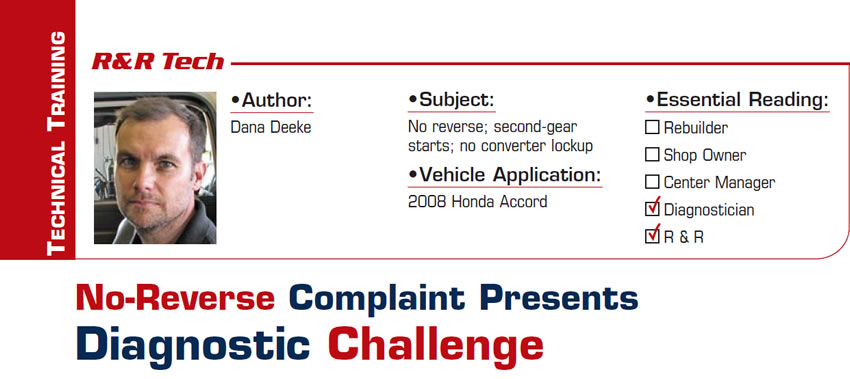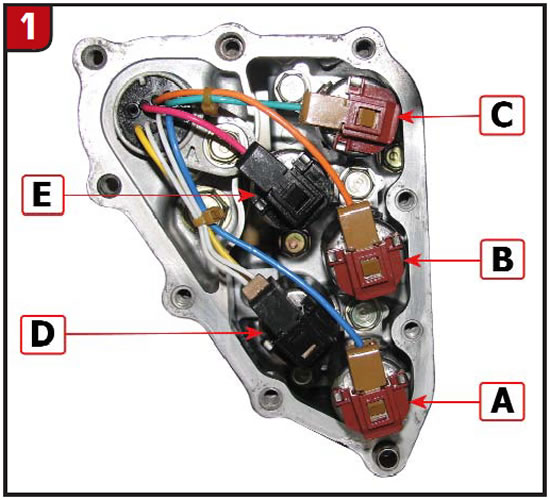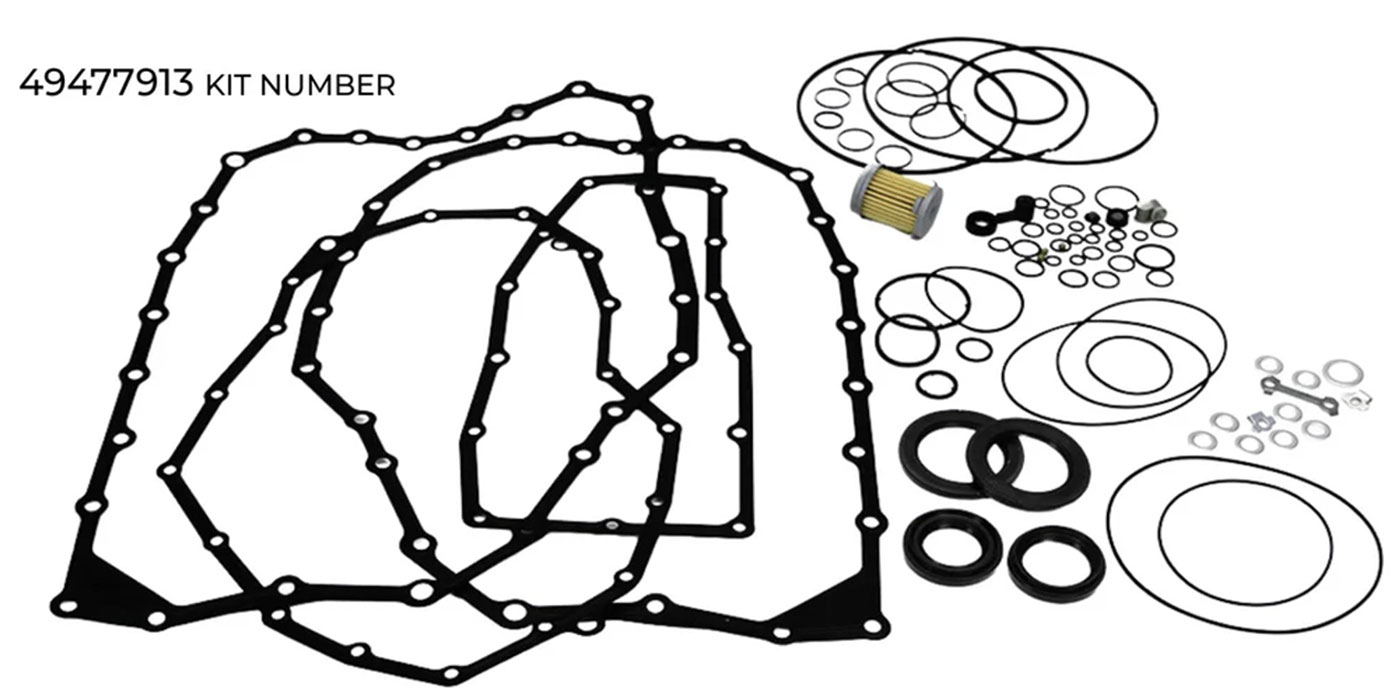
R&R Tech
- Subject: No reverse; second-gear starts; no converter lockup
- Vehicle Application: 2008 Honda Accord
- Essential Reading: Diagnostician, R & R
- Author: Dana Deeke
Recently I encountered a job in my shop that reminded me of the importance of never taking an initial diagnosis at face value. When problem-solving, what you find on the surface doesn’t always tell the whole story. That was the case with the 2008 Honda Accord that showed up at our shop one day, coming to us as a sublet from another repair facility. This adds to the challenge, since we didn’t have any direct communication with the vehicle owner.
The shop told us that they had replaced the transmission and delivered the car back to the owner. The owner drove the vehicle to her workplace with no issue. When she tried to back out of her parking stall to begin her drive home after work, the unit failed to engage reverse. She managed to push the car out of the stall and was able to engage forward gears and drive home.
It was reported that once the vehicle got up to highway speeds the “D” light began to flash and the upshifts became erratic at the same time. With this I mind, I connected the scan tool and checked codes. I noted a P0986 (solenoid E control circuit high). With the scan tool still connected for monitoring, I set out for the road.
On the road I experienced second-gear starts and no converter lockup at highway speeds. Also, as mentioned, there was no reverse-gear engagement. Since solenoid E is responsible for converter lockup, the code fit that symptom perfectly. And since this code was out there, the failsafe second-gear starts also made sense. How did the no-reverse complaint fit into this scenario? Some research was in order.
Unfortunately, the shop that sent the car to us couldn’t tell me whether all these symptoms occurred simultaneously. The only thing that they could tell me was that the owner had driven the vehicle for several days before even having a need to engage reverse. That information was of little use. I then checked for any applicable TSB information that might help. I was looking for something that might show me how these two issues might be related. A TSB search got me nowhere, so now it was time to check into the theory and operation of this solenoid.
As I read about the operating strategy of the solenoids, I learned that the PCM commands solenoids A, B and E (Figure 1) when reverse gear is selected. Now I could see that solenoid E has an important role in reverse-gear engagement, and I was starting to think I had cleared at least one hurdle. If solenoid E is inoperable, oil will not be directed to engage reverse. I was now certain that I had found a common link to the problems that the owner experienced.

Focusing on solenoid E, there was no clicking sound as I switched it on and off. The solenoid had proper continuity, so I then shifted my attention to a wiring or PCM issue. The simplest approach was to check the wiring first. A continuity check of the wiring between the PCM and the transmission connector revealed an apparent open circuit. I followed the wiring loom from the PCM down to the transmission, and it was at the connector for the shift solenoids where the root cause revealed itself: a broken wire.
I repaired the wiring and retested the system. As expected, the code was gone and the transmission was operating normally. At the end of the day, it showed me that vehicle manufacturers use electronic and hydraulic strategies that change with time, and what we knew a few years ago may not hold true today. Prior to this diagnosis and repair, I had no idea that converter lockup and reverse engagement could be related in any way. I’ll keep this in mind when the next puzzler finds its way to my bay.

Dana Deeke has been with Certified Transmission for more than 20 years and is the diagnostician at the company’s location in Lincoln, Neb.













